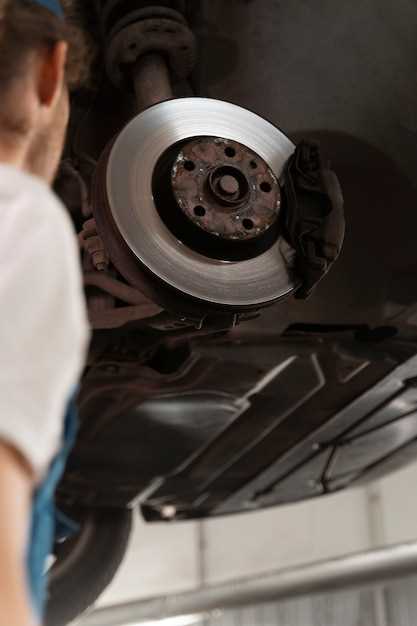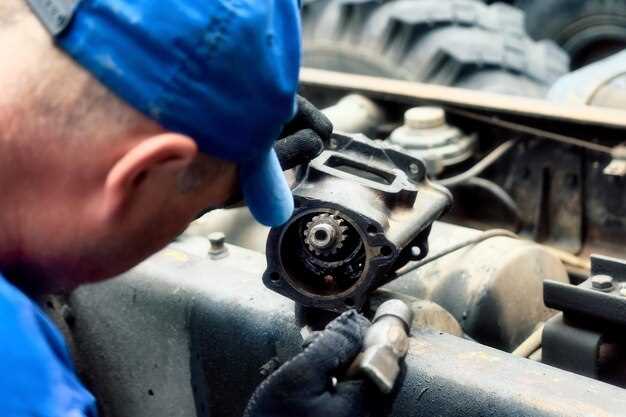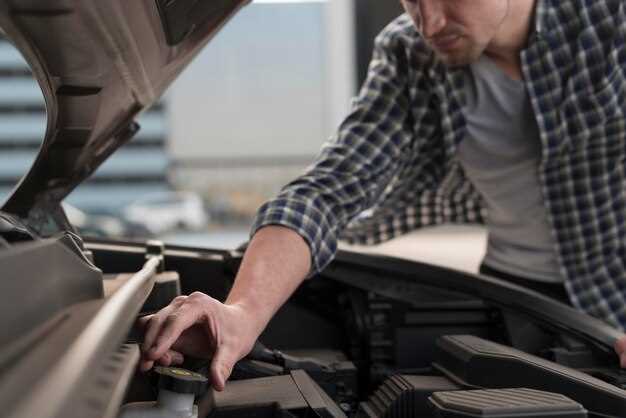
The alternator is a crucial component of the charging system in your VW Corrado, responsible for converting mechanical energy into electrical energy. Without a properly functioning alternator, your vehicle will struggle to maintain its battery charge, leading to performance issues and potential breakdowns. Replacing a faulty alternator is essential for ensuring the longevity of your vehicle and maintaining reliable operation.
When preparing for the replacement, it is vital to understand the role of the alternator within the broader scope of your car’s electrical system. A healthy charging system is integral not only for powering accessories but also for keeping your battery in optimal condition. In this article, we’ll provide a step-by-step guide on how to replace the alternator in a VW Corrado, ensuring you have all the tools and knowledge needed to tackle this essential task.
Whether you are a seasoned mechanic or a novice DIY enthusiast, following the correct procedure will help you avoid common pitfalls during the alternator replacement process. We will highlight necessary precautions and common mistakes to ensure that your vehicle’s charging system is restored to perfect working order.
Identifying Alternator Failure Symptoms in VW Corrado

Recognizing the signs of alternator failure is crucial for maintaining your VW Corrado’s electrical system. A failing alternator can lead to a range of issues that impact the vehicle’s performance and reliability. One of the first symptoms to consider is dimming or flickering headlights. If you notice that your lights are not as bright as usual or they fluctuate in brightness, this can indicate that your alternator is struggling to provide adequate power.
Another common symptom is warning lights on the dashboard. If the battery warning light illuminates while driving, it suggests that there may be a problem with the alternator or the charging system. Pay attention to this indicator as neglecting it can lead to complete failure and eventual battery depletion.
Additionally, listen for unusual noises such as grinding or whining sounds coming from the engine bay. These sounds may indicate that the alternator bearings are worn. Another potential symptom is difficulty starting the vehicle. If the engine cranks slowly or fails to start altogether, it might be a result of insufficient power output from the alternator.
Finally, if you observe any electrical issues, such as malfunctioning accessories, erratic behavior of electronic components, or frequent battery discharge, it’s a strong indication that the alternator may need replacement. Staying vigilant for these symptoms can help ensure your VW Corrado continues to operate smoothly and efficiently.
Gathering Necessary Tools for Alternator Replacement

Before embarking on the alternator replacement for your VW Corrado, it is crucial to gather all necessary tools to ensure a smooth and efficient process. A well-prepared workspace will significantly reduce the time required for the repair.
First and foremost, you will need a ratchet set with various socket sizes. Typically, a combination of 10mm, 13mm, and 15mm sockets will be required to remove the bolts securing the alternator and other components. A breaker bar can also be valuable for loosening stubborn bolts.
In addition to sockets, a wrench set will come in handy for accessing tight spaces. A set that includes both standard and metric sizes ensures that you have the right tool for any fastener you encounter.
Another essential tool is a torque wrench. Proper torque specifications are critical when reinstalling the alternator and its associated belt to ensure optimal performance and prevent future charging issues. Refer to your vehicle’s manual for the specific torque values.
To safely disconnect the battery, a battery terminal wrench is also required. Always disconnect the negative terminal before beginning any electrical work on the vehicle to avoid short circuits.
You may need additional tools such as a screwdriver set for removing any covers or brackets that obstruct access to the alternator. A pulley removal tool can also be useful if the alternator’s pulley needs to be swapped during the installation.
Ensure you have a multimeter on hand to test the new alternator’s output once installed. This tool helps verify that the alternator is functioning correctly and properly charging the battery.
Lastly, prepare a clean work area with plenty of lighting. Having a worklight or flashlight will allow you to see small components and connections clearly, making the replacement process easier and more efficient.
Step-by-Step Guide to Remove the Old Alternator
Removing the old alternator from your VW Corrado is a crucial step before installing a replacement. Follow these steps to ensure you complete the task correctly.
-
Gather Necessary Tools and Materials:
- Socket set
- Wrenches
- Screwdrivers
- Safety gloves
- New alternator (for replacement)
-
Disconnect the Battery:
To prevent any electrical shorts, disconnect the negative terminal of the battery. This is important for your safety and to protect the vehicle’s electrical system.
-
Locate the Alternator:
The alternator is typically located near the front of the engine. Familiarize yourself with its placement to easily access it.
-
Remove Drive Belt:
Loosen the tensioner pulley using the appropriate tool. Once the tension is released, carefully slip the drive belt off the alternator pulley.
-
Disconnect Wiring Harness:
Locate the electrical connectors on the alternator and carefully unplug them. Be sure to take note of where each connector goes for reinstallation.
-
Remove Alternator Mounting Bolts:
Using the socket set, remove the bolts securing the alternator to its mounting bracket. Keep these bolts in a safe place for the new alternator installation.
-
Take Out the Alternator:
Once all connections and bolts are removed, gently lift the alternator out of its place. Take care not to damage surrounding components during this process.
-
Inspect the Area:
Before proceeding with the installation of the new alternator, inspect the mounting area and ensure there are no debris or damage.
You have successfully removed the old alternator from your VW Corrado, paving the way for a new charging system replacement.
Installing the New Alternator in VW Corrado
Once you have gathered the necessary tools and successfully removed the old alternator, it’s time to install the new alternator in your VW Corrado. This process requires careful attention to detail to ensure proper charging functionality.
Begin by positioning the new alternator in place, aligning it with the mounting brackets. Ensure that the electrical connections are oriented correctly for easy access. Secure the alternator using the bolts you removed earlier. It is crucial to tighten them to the manufacturer’s specifications to prevent any potential vibrations or misalignment during operation.
Next, connect the positive and negative terminals to the alternator. Ensure that the connections are clean and free of corrosion to maintain optimal charging performance. A tight fit will help avoid electrical issues in the future.
| Connection | Purpose |
|---|---|
| Positive Terminal | Supplies power to the electrical system |
| Negative Terminal | Completes the electrical circuit |
After securing the electrical connections, reattach the serpentine belt to the alternator. Make sure the belt is routed correctly around the pulleys. Check the tension of the belt to ensure it is tight enough to avoid slippage, which can affect charging efficiency.
Finally, double-check all connections and bolts before starting the engine. It is advisable to inspect the alternator for any signs of misalignment or looseness. Start the engine and monitor the dashboard for battery warning lights to confirm that the new alternator is functioning properly and providing adequate charging.
Testing the Charging System After Installation
After completing the replacement of the alternator in your VW Corrado, it is crucial to test the charging system to ensure everything is functioning correctly. A well-functioning charging system is vital for maintaining battery health and overall vehicle performance.
Begin by reconnecting the negative battery terminal if you haven’t done so already. Start the engine and let it idle. Use a multimeter to measure the voltage at the battery terminals. A healthy charging system should produce a voltage reading between 13.8 and 14.4 volts. If the voltage is significantly lower or higher, it may indicate an issue with the newly installed alternator.
Next, perform a load test. Turn on several electrical accessories, such as headlights, air conditioning, and the radio, to increase the demand on the charging system. Monitor the multimeter reading during this process. The voltage should remain stable, ideally staying above 13 volts. A drop in voltage below this threshold could suggest that the alternator is not generating sufficient power.
Finally, check the alternator’s connections and ground wire to ensure that they are secure and free of corrosion. A poor connection can affect the system‘s performance, leading to intermittent charging issues.
If your tests show that voltage levels are maintained and all connections are secure, the newly installed alternator and the charging system are functioning correctly. If you encounter any discrepancies, further investigation might be necessary to identify underlying issues.
Common Mistakes to Avoid During Alternator Replacement
Replacing the alternator in your VW Corrado can be a straightforward task, but several common mistakes can complicate the process. Avoid the following pitfalls to ensure a successful installation and proper functioning of the charging system.
-
Neglecting Battery Disconnection:
Always disconnect the battery before starting the replacement. Failing to do so can lead to electrical shorts or damage to the charging system components.
-
Using Incorrect Tools:
Utilize the correct tools for removing and installing the alternator. Using improper tools may damage fasteners or the alternator itself.
-
Ignoring Belt Condition:
Check the serpentine belt for wear or damage. A worn belt can lead to insufficient alternator performance, affecting the entire charging system.
-
Forgetting to Align the Alternator:
Proper alignment of the alternator with the drive belt is crucial. Misalignment can cause premature wear and belts slipping, impairing the charging function.
-
Not Testing After Installation:
After replacing the alternator, always test the charging system. Use a multimeter to check voltage output. This ensures that the new alternator is functioning correctly.
-
Overlooking Wiring Connections:
Double-check all electrical connections, including the battery terminals and wiring harness. Poor connections can lead to charging issues.
-
Skipping the Torque Specifications:
Every bolt has a specific torque requirement. Skipping this step can lead to loose components or stripped threads, resulting in alternator failure.
By avoiding these common mistakes, you can ensure a smoother alternator replacement process that will help maintain an efficient charging system in your VW Corrado.











